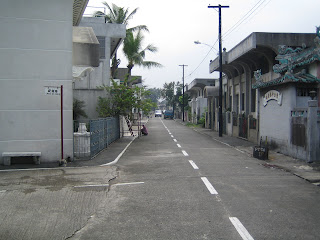The largest lake in the Philippines is nearby Pagsanjan Falls and called Laguna de Bay Lake. We actually had to increase elevation to go up to the lake, which is quite large, generally shallow, and has good water quality.
My friend knew about an old abandoned house on the lake and so we went up the day before to see if we would be able to use it for a grand barbecue. Here we are in our transportation for the lake reconnoitering mission:

Picture of a part of the lake itself:

We took a boat out to see the abandoned house and we found it! The owner mysteriously disappeared seven years ago. There is a caretaker on the small island who has his own place and takes care of this larger house. He also raises Talapia fish encased in nets about 60 meters offshore.

We found a farm that had a bunch of extra vegetables. We talked to one of the workers, and they said we could have all the veggies we want for 30 pesos (about US $0.70).

Here is the scene after he told us the price:

Well, the next day all of us went out to the abandoned place. My friends made a special Filipino vegetable paste out of the veggies we gathered and it was really good! I swam out and we netted some Talapia fish (we paid the caretaker). We barbecued the Talapia and they were so good! This was all polished off with some San Miguels, the national beer of the Philippines. I have never been much of a beer drinker but those San Miguel Lites are actually quite tasty!
It turns out that most Filipinos cannot swim, much to my surprise. I can swim like a fish, so I even gave a few swimming lessons for those willing to try. It was a great and relaxing day!























